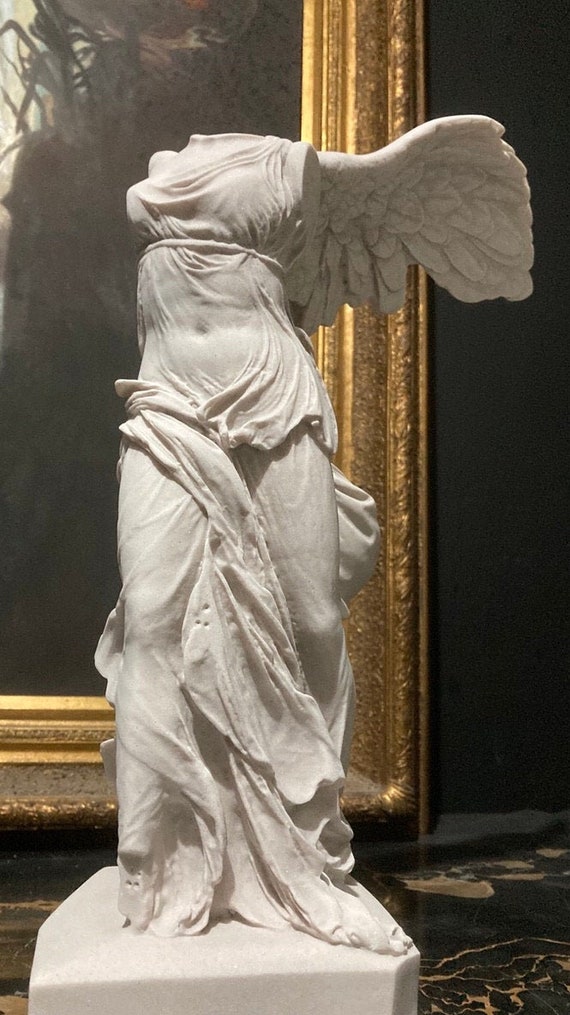Unveiling the Nike of Samothrace: A Timeless Masterpiece

Opening Paragraph:
The Nike of Samothrace, also known as the Winged Victory of Samothrace, stands as one of the most iconic sculptures in the history of art. Perched majestically at the Louvre Museum in Paris, this Hellenistic masterpiece continues to captivate visitors with its dynamic pose and intricate details. Created around the 2nd century BCE, the sculpture symbolizes victory and is a testament to the artistic brilliance of ancient Greece. Whether you’re an art enthusiast or a casual admirer, understanding the story and significance of the Nike of Samothrace offers a deeper appreciation of its timeless allure. (Nike of Samothrace, Hellenistic sculpture, Louvre Museum)
## The Origins and Discovery of the Nike of Samothrace
The Nike of Samothrace was discovered in 1863 by French archaeologist Charles Champoiseau on the island of Samothrace, Greece. The sculpture was found in fragments, which were later meticulously restored. It is believed to have been commissioned to commemorate a naval victory, possibly by the Rhodians over Antiochus III. The statue’s original location was likely a sanctuary on Samothrace, where it would have been a focal point of worship and celebration. (Charles Champoiseau, Samothrace, naval victory)
## Artistic Features and Symbolism
The Nike of Samothrace is a masterpiece of Hellenistic art, characterized by its lifelike movement and emotional intensity. The sculpture depicts Nike, the Greek goddess of victory, with wings outstretched as if descending from the heavens. Her flowing marble drapery creates a sense of motion, while her missing head and arms add an air of mystery. The statue’s symbolism extends beyond victory; it represents the triumph of the human spirit and the divine connection between mortals and gods. (Hellenistic art, Greek goddess, marble drapery)
| Feature | Description |
|---|---|
| Material | White Parian marble |
| Height | Approximately 8 feet (2.43 meters) |
| Style | Hellenistic, emphasizing movement and realism |

## The Nike of Samothrace at the Louvre
Since its acquisition by the Louvre in the late 19th century, the Nike of Samothrace has become one of the museum’s most celebrated exhibits. Positioned atop the Daru staircase, the sculpture greets visitors with its commanding presence. Its placement is intentional, symbolizing the ascent to artistic and cultural enlightenment. For those planning a visit, the Louvre offers guided tours and audio guides to enhance your experience. (Louvre Museum, Daru staircase, guided tours)
📌 Note: The Nike of Samothrace is best viewed from multiple angles to fully appreciate its intricate details and dynamic composition.
## How to Appreciate the Nike of Samothrace
To fully immerse yourself in the beauty of the Nike of Samothrace, consider these tips:
- Observe the Drapery: Notice how the marble seems to flow like fabric, capturing a moment of movement.
- Study the Wings: The wings are a marvel of sculpture, showcasing the artist’s skill in depicting feathers and aerodynamics.
- Reflect on Symbolism: Think about what victory means to you and how the sculpture embodies this concept.
- Take Your Time: Spend a few minutes absorbing the statue’s presence and its historical significance. (marble drapery, sculpture wings, symbolism)
## Where to Learn More About the Nike of Samothrace
For those eager to delve deeper into the history and artistry of the Nike of Samothrace, numerous resources are available:
- Books: The Sculpture of Greece by Robert Garland provides an in-depth analysis.
- Documentaries: Explore art history documentaries available on streaming platforms.
- Museum Workshops: Check the Louvre’s website for workshops and lectures on ancient Greek art. (art history books, documentaries, museum workshops)
Final Thoughts:
The Nike of Samothrace remains a timeless masterpiece that bridges the ancient world with modern admiration. Its artistry, symbolism, and history continue to inspire and educate, making it a must-see for anyone visiting the Louvre. Whether you’re studying art history or simply appreciating beauty, the Winged Victory offers a profound connection to humanity’s past. (timeless masterpiece, art history, Louvre visit)
FAQ Section
What does the Nike of Samothrace symbolize?
+
The Nike of Samothrace symbolizes victory, particularly naval triumphs, and represents the Greek goddess Nike, embodying the concept of success and divine favor.
Where is the Nike of Samothrace located today?
+
The sculpture is prominently displayed at the Louvre Museum in Paris, France, atop the Daru staircase.
Why is the Nike of Samothrace considered a masterpiece?
+
Its dynamic pose, intricate drapery, and symbolic significance make it a pinnacle of Hellenistic art and a timeless representation of victory.



